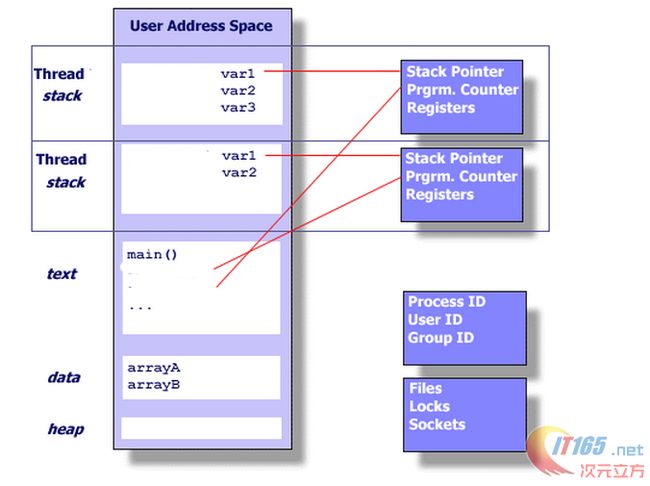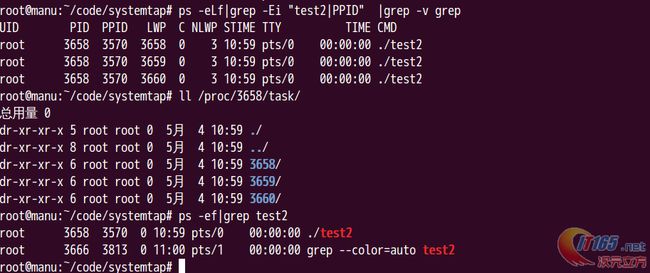001.
#include
003.
#include
005.
006.
#define gettid() syscall(__NR_gettid)
007.
008.
pthread_key_t key;
009.
__thread int count = 2222;
010.
__thread unsigned long long count2 ;
011.
static __thread int count3;
012.
void echomsg(int t)
013.
{
014.
printf("destructor excuted in thread %x,param=%x\n",pthread_self(),t);
015.
}
016.
017.
void * child1(void *arg)
018.
{
019.
int b;
020.
int tid=pthread_self();
021.
022.
printf("I am the child1 pthread_self return %p gettid return %d\n",tid,gettid());
023.
024.
char* key_content = malloc(8);
025.
if(key_content != NULL)
026.
{
027.
strcpy(key_content,"ACACACA");
028.
}
029.
pthread_setspecific(key,(void *)key_content);
030.
031.
count=666666;
032.
count2=1023;
033.
count3=2048;
034.
printf("I am child1 , tid=%x ,count (%p) = %10d,count2(%p) = %10llu,count3(%p) = %6d\n",tid,&count,count,&count2,count2,&count3,count3);
035.
asm volatile("movl %%gs:0, %0;"
036.
:"=r"(b)
037.
);
038.
039.
printf("I am child1 , GS address %x\n",b);
040.
041.
sleep(2);
042.
printf("thread %x returns %x\n",tid,pthread_getspecific(key));
043.
sleep(50);
044.
}
045.
046.
void * child2(void *arg)
047.
{
048.
int b;
049.
int tid=pthread_self();
050.
051.
printf("I am the child2 pthread_self return %p gettid return %d\n",tid,gettid());
052.
053.
char* key_content = malloc(8);
054.
if(key_content != NULL)
055.
{
056.
strcpy(key_content,"ABCDEFG");
057.
}
058.
pthread_setspecific(key,(void *)key_content);
059.
count=88888888;
060.
count2=1024;
061.
count3=2047;
062.
printf("I am child2 , tid=%x ,count (%p) = %10d,count2(%p) = %10llu,count3(%p) = %6d\n",tid,&count,count,&count2,count2,&count3,count3);
063.
064.
065.
asm volatile("movl %%gs:0, %0;"
066.
:"=r"(b)
067.
);
068.
069.
printf("I am child2 , GS address %x\n",b);
070.
071.
sleep(1);
072.
printf("thread %x returns %x\n",tid,pthread_getspecific(key));
073.
sleep(50);
074.
}
075.
076.
077.
int main(void)
078.
{
079.
int b;
080.
pthread_t tid1,tid2;
081.
printf("hello\n");
082.
083.
084.
pthread_key_create(&key,echomsg);
085.
086.
asm volatile("movl %%gs:0, %0;"
087.
:"=r"(b)
088.
);
089.
090.
printf("I am the main , GS address %x\n",b);
091.
092.
pthread_create(&tid1,NULL,child1,NULL);
093.
pthread_create(&tid2,NULL,child2,NULL);
094.
095.
printf("pthread_create tid1 = %p\n",tid1);
096.
printf("pthread_create tid2 = %p\n",tid2);
097.
098.
sleep(60);
099.
pthread_key_delete(key);
100.
printf("main thread exit\n");
101.
return 0;
102.
}


